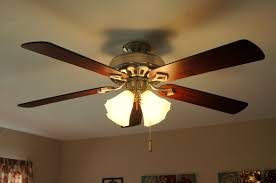Direction of your Ceiling Fan

For most, the trusty ceiling fan is a go-to solution for welcoming breezes during sweltering summer months, providing a cooling effect by circulating the air. Ceiling fans can do more than just cool your living spaces; they can also enhance warmth when winter chills arrive. Furthermore, knowing how to use your ceiling fan correctly throughout the year can lead to notable savings on your energy expenses.
Unlocking the Full Potential of Your Ceiling Fan
The secret to harnessing the full capabilities of a ceiling fan lies in adjusting the direction of the blades' rotation to cater to your specific seasonal requirements. Continue reading to discover the fundamentals of fan direction, along with essential insights into blade span and pitch, to make the most of these popular fixtures throughout the year.
Ceiling Fan Direction: Summer vs. Winter
Installed at the center of a room's ceiling and equipped with various speed settings, ceiling fans play a pivotal role in air circulation, influencing the perceived temperature in a space without actually altering the room's thermostat. Here's how their functionality varies across different seasons.
Summer Setting
During warmer months, it's advisable for ceiling fan blades to rotate counterclockwise. This rotation generates a downward airflow that subsequently pushes air along the walls, creating an upward current. This method effectively redistributes air throughout the room. It works because cooler air naturally settles near the floor while warmer air rises. The counterclockwise spin of the blades helps transport cooler air to a level where you can feel its refreshing effects, a phenomenon known as the wind chill effect. However, it's essential to remember that while this approach enhances comfort, it doesn't actually lower the room's temperature. To maximize efficiency and safety, it's recommended to turn off the ceiling fan when the room is unoccupied by people or pets.
Winter Setting
While it may appear counterintuitive to engage a fan when seeking warmth, a ceiling fan can indeed contribute to maintaining comfort during the winter season. When the fan operates in a clockwise direction (the reverse of its summer setting) at a low speed, it produces an updraft. This updraft effectively draws cold air upward toward the ceiling, leading to a more uniform distribution of the warmth emanating from your central heating system, space heater, or fireplace throughout the room. Instead of allowing cold pockets to form, the fan's circulation keeps the living space cozy and comfortable.
It's crucial to emphasize that this adjustment doesn't alter the actual room temperature; it simply enhances the perception of warmth. As with the summer season, it's advisable to switch off the ceiling fan when leaving the room.
